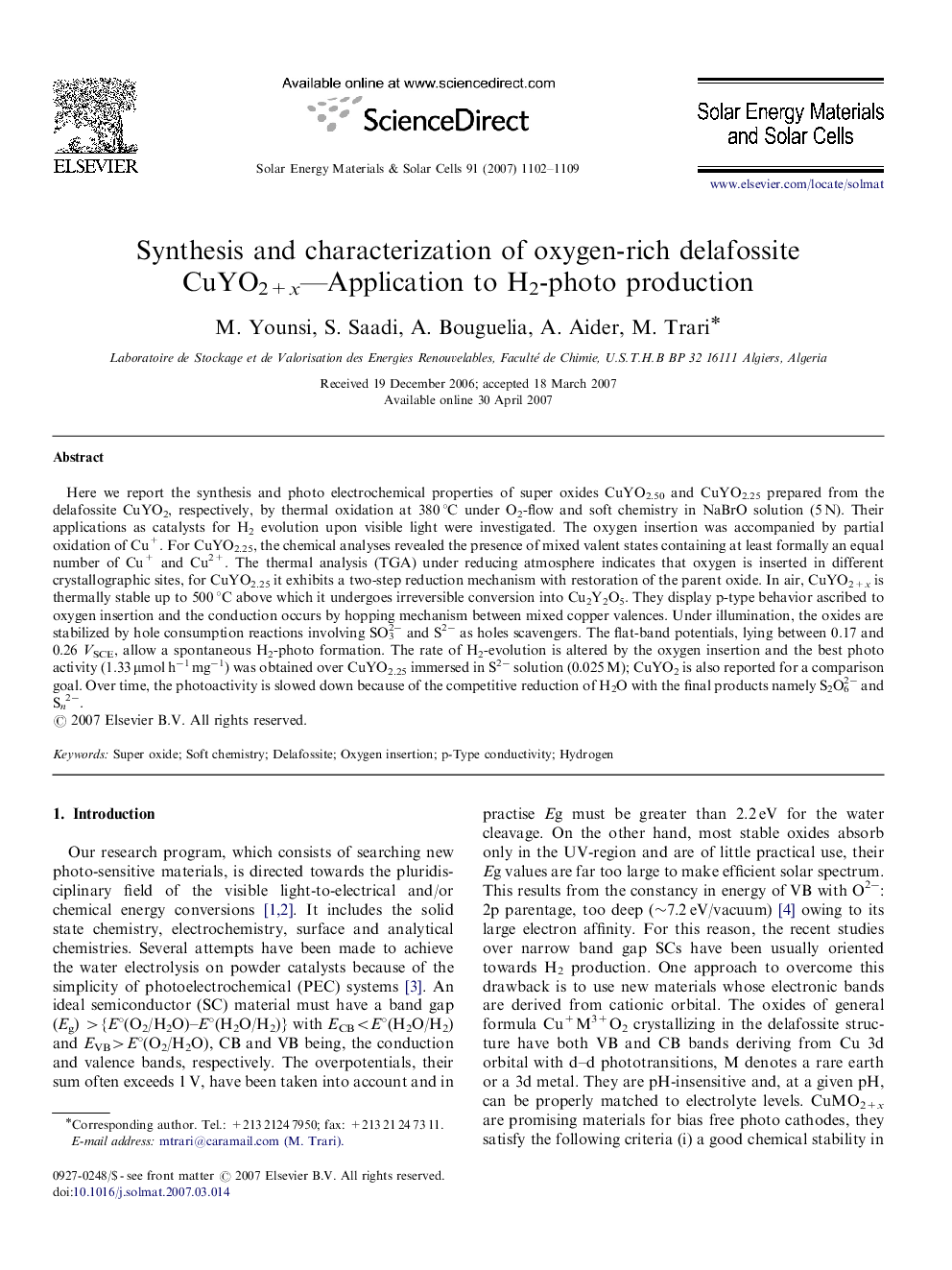| Article ID | Journal | Published Year | Pages | File Type |
|---|---|---|---|---|
| 81098 | Solar Energy Materials and Solar Cells | 2007 | 8 Pages |
Here we report the synthesis and photo electrochemical properties of super oxides CuYO2.50 and CuYO2.25 prepared from the delafossite CuYO2, respectively, by thermal oxidation at 380 °C under O2-flow and soft chemistry in NaBrO solution (5 N). Their applications as catalysts for H2 evolution upon visible light were investigated. The oxygen insertion was accompanied by partial oxidation of Cu+. For CuYO2.25, the chemical analyses revealed the presence of mixed valent states containing at least formally an equal number of Cu+ and Cu2+. The thermal analysis (TGA) under reducing atmosphere indicates that oxygen is inserted in different crystallographic sites, for CuYO2.25 it exhibits a two-step reduction mechanism with restoration of the parent oxide. In air, CuYO2+x is thermally stable up to 500 °C above which it undergoes irreversible conversion into Cu2Y2O5. They display p-type behavior ascribed to oxygen insertion and the conduction occurs by hopping mechanism between mixed copper valences. Under illumination, the oxides are stabilized by hole consumption reactions involving SO32− and S2− as holes scavengers. The flat-band potentials, lying between 0.17 and 0.26 VSCE, allow a spontaneous H2-photo formation. The rate of H2-evolution is altered by the oxygen insertion and the best photo activity (1.33 μmol h−1 mg−1) was obtained over CuYO2.25 immersed in S2− solution (0.025 M); CuYO2 is also reported for a comparison goal. Over time, the photoactivity is slowed down because of the competitive reduction of H2O with the final products namely S2O62− and Sn2−.
